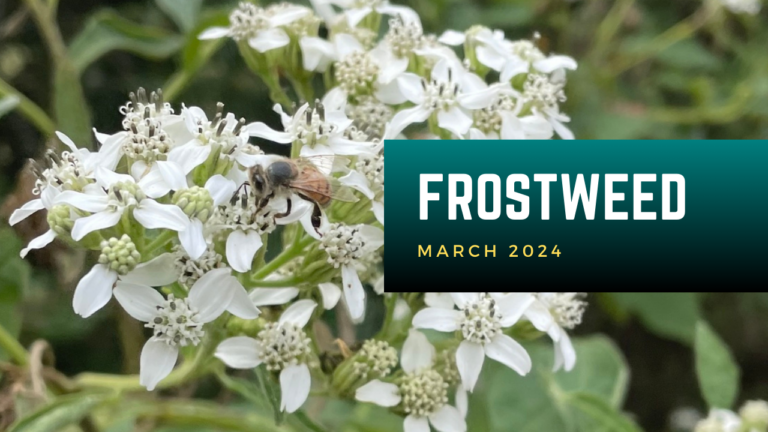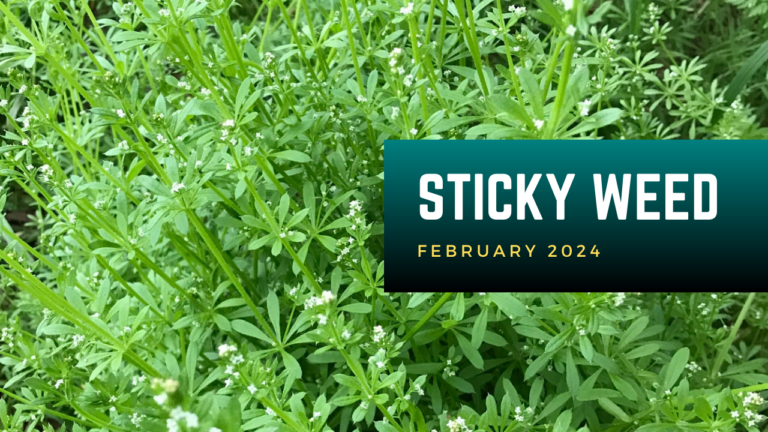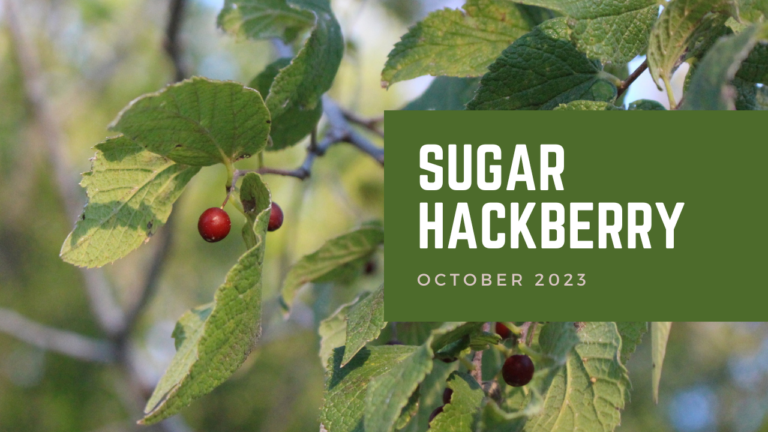Presented by Melina Carson
February 13, 2023
Botanical name: Amsonia tomentosa
Common name(s): Woolly Bluestar, Woolly Amsonia, Small Leaves Amsonia, Gray Amsonia
Family: Apocynaceae
[MUSIC—EASY AND FUN]
[MELINA] Hello everyone. My name is Melina Carson and I will be presenting this Plant of the Month—the Amsonia tomentosa or the Woolly Blue Star. I’ll go over the history, distribution, characteristics, planting conditions, and some beneficial uses.
Amsonia tomentosa is from the Dogbane Family, Apocyanaceae. It is commonly also known as the Woolly Bluestar, Woolly Amsonia, Woolly Eastwoodiana, Small Leaves Amsonia and the Gray Amsonia. In Texas, we have a total of eight species.
The species word tomentosa refers to the woolly hairs found on the petals and stems and means densely covered with matted wool or short hair. In 1788, Thomas Walter published the genus Amsonia in honor of Dr. John Amson, who was an 18th century physician.
This plant is also native in more desert-like regions like the Mojave Desert; northern Arizona; southeast Utah; Chihuahua, Mexico; and west Texas. They are found in plains, washes, canyons, desert, and semi-desert. They like well-drained soil as well as sandy or gravelly places along washes or on desert plains. Their elevation typically goes up to about 5500 feet.
Amsonia tomentosa is a beautiful short herbaceous perennial that is found in zone 6B to 10B. At maturity the plant is eight inches to two feet tall, one to two feet wide, and has few to many branches. Their leaves are green, alternately arranged, lanceolate leaves that are acute on both ends. You can see this on the top right photo. They are about one inch or more in length and are tomentos, or hairy and woolly. The flower color ranges from white to blue to lavender and has five sepals and five petals. They are in a terminal compound cyme of about a dozen flowers. In the bottom left photo, you can see the short and thick woolly stems.
For planting conditions, the soils need to be well drained. Sandy or gravelly places that mimic soil types found in washes, canyons, and desert plains is best because they have rocky and gritty soil and receive a ton of sun exposure. For optimal results, they need at least five hours of direct sunlight and partial shade is okay. If you cannot give that much direct sunlight, cutting it back after flowering will give it a neater and healthier appearance.
If you are interested in propagating them, it takes about two to three weeks to germinate seedlings. After the second year, they will begin to flower. Be sure to accomplish division when the plant is dormant during the spring or fall. They are heat, wind, and drought tolerant and only need to be watered occasionally.
Researching Amsonia tomentosa, I found that has been used as a snake bite remedy by the Zuni Tribe in New Mexico. They used a compound poultice of the root on the wound in a ceremonial fashion—have done so for many years. You can find more information on this with the Ethnobotany of the Zuni Indians report.
Here are the resources I used and thank you for watching.
[MUSIC—AND THAT’S IT]
Literature Cited
- Amsonia tomentosa | Amsonia eastwoodiana | Woolly Amsonia | Wooly Bluestar | plant lust
- Amsonia tomentosa, Woolly Bluestar, Southwest Desert Flora
- BRIT – Native American Ethnobotany Database | Apocynaceae Amsonia tomentosa var. tomentosa
- Western USA wildflowers: Woolly Bluestar, Amsonia Tomentosa (americansouthwest.net)
Related Posts

Plant of the Month: Frostweed
Our plant of the month for March 2024 is a little bit icy.
Botanical name: Verbesina virginica
Common name(s): Frostweed, White Crownbeard, Iceplant, Iceweed, Virginia Crownbeard, others

Plant of the Month: Sticky Weed
Is our plant of the month for February 2024 a wildflower or a weed? We’ll let you decide.
Botanical name: Galium aparine
Common name(s): Sticky Weed, Sticky Willy, Sticky Grass, Goosegrass, Catchweed Bedstraw, Cleavers, others

Plant of the Month: Sugar Hackberry
Our plant of the month for October 2023 is a “favorite” among robins, mockingbirds, and other songbirds.
Botanical name: Celtis laevigata
Common name(s): Sugar Hackberry, Texas Sugarberry, Sugarberry, Palo Blanco

